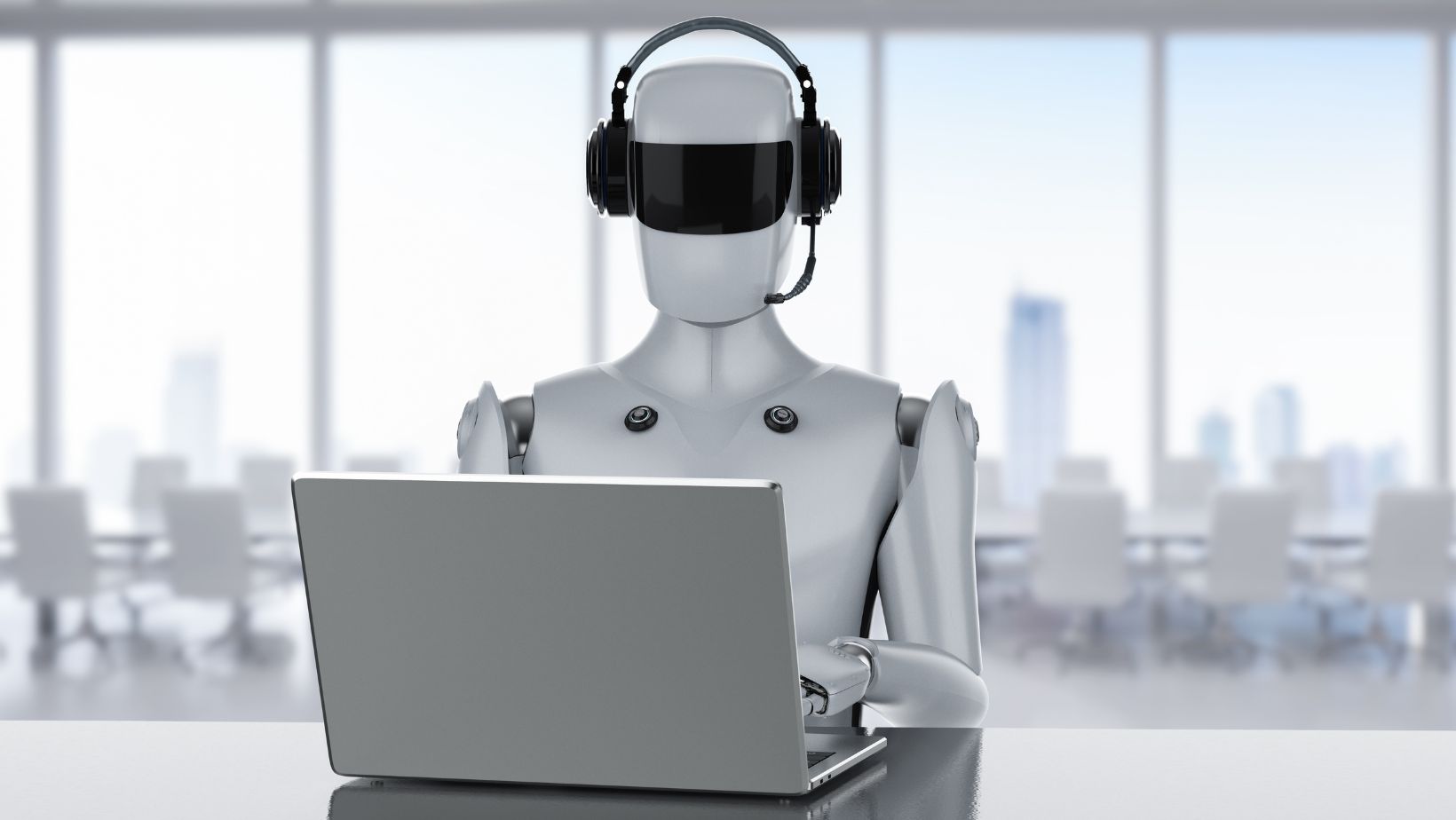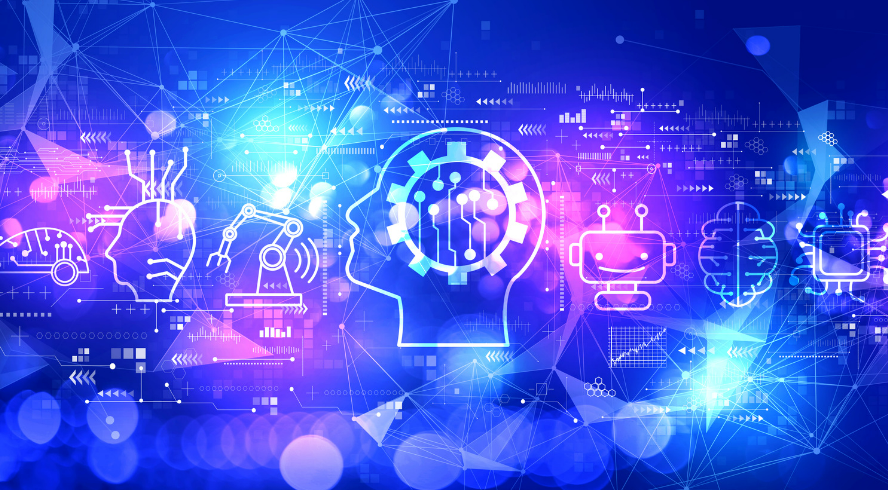It is interesting that something that was only viewed and presented as science fiction has become mainstream today. From being in the realms of experimental technologies, Artificial Intelligence (AI) has become an essential tool, even in business. For instance, Synima’s gen AI services demonstrate how AI is revolutionizing video creation and content management for businesses.
The Rise in AI Adoption
The rate at which AI is being adopted across board is mind blowing. We know that businesses will always want to take advantage of anything that can help give them the slightest edge over the competition. We however never knew that it was going to be this rapid.
With machine learning, computer vision and natural language processing, among others, providing resources and avenues for business to reduce cost while increasing efficiency, it was only natural for them to embrace the innovation. No one would want to be left to play catch up.
When McKinsey did a report in 2023 on the percentage of organizations that had implemented AI, people were impressed. Two years later, it’s nothing but shocking to see how this choice is practically taking over many aspects of business operations. You can read the most recent report here.
While the rate of adoption is quite high, it appears to be more prevalent in certain sections including the following:
- Process Automation – Previously, automation was mainly restricted to repetitive actions. However, artificial intelligence has made it possible for even more complex actions to be automated. Examples include customer service relations, HR, logistics and even finance.
- Customer Service – We already hinted at this in the point above. With intelligent chat bots and virtual assistants, customers can have their questions answered quickly. This means that what actually gets to the human customer services representatives are problems that have to be handled by a human. You also have the use of virtual welcome desks where the reception service is automated, removing the need for any physical staff.
- Data Analysis – This is easily one of the areas where organizations are making the most of artificial intelligence. With its ability to sift through large sets of data quickly and with precision, analysis can be carried out quickly and efficiently, meaning that decision making is easier, faster and more effective.
- Cyber Security – As with the case of data analysis, threat detection has been taking to a new level with AI. Aside from detecting threats, it can also predict possible threat areas and proffer solutions, making it the perfect cyber security expert to have on your team.
The above are just some examples of how artificial intelligence is being use. There are of course a lot more applications for both individuals and organizations, but these cover the most common use case scenarios.
How is Artificial Intelligence Improving Operational Efficiency?
We’ve mentioned some of the impacts of AI in a general sense, but we’ll now look at specifics as it relates to operational efficiency. Below are examples of how operation efficiency is being enhanced by this technology:
Business Process Automation
This point has been discussed briefly above. However, because it is at the core of the day-to-day running of a business, we will take a closer look at it.
AI has made it unnecessary to assign repetitive tasks to valued members of the team. These tasks and even more complex ones can now be handled by artificial intelligence, leaving your staff to focus on more high value tasks.
Aside from reducing the workload on your staff, it also increases efficiency as human error is eliminated. With the increased efficiency and absence of human error, production will be at its highest even as operational costs are significantly reduced.
Specific examples of this include:
- Data Processing – This covers both entry and analysis and AI-powered tools such as NLP (Natural Language Processing) and OCR (Optical Character Recognition), make these processes a breeze. They can extract information from various documents like emails, invoices, contracts etc., enter them into systems and perform some analysis without human intervention.
- Manufacturing – In this industry, robots that are AI-driven can automate entire assembly lines. Tasks like welding, counting, quality checks, packaging and inventory listing can all be done with accuracy and speed.
- Customer Service – Many businesses now have the capacity to offer 24/7 customer service response. This is largely handled by virtual assistants and Chatbots. This means that queries are attended to quickly, so customers no longer have to wait for hours to be attended to. It is now also spreading to the front desk with virtual welcome desks that attend to visitors without human intervention.
Improved Decision Making
Decision making is effective and accurate when data is correctly analyzed. With AI’s ability to collate and process massive amounts of data, it significantly enhances the process of decision-making in the following ways:
- Predictive Analytics – Having processed and efficiently analyzed available data sets, AI can make educated predictions across various areas like demand, market trends, and even equipment failure.
- Personalization – Though this has been going on for a while in retail marketing, AI has just taken it to a whole new level. Because of its ability to learn patterns and process data efficiently, AI is able to predict a customer’s purchasing habits and therefore be able to design a marketing strategy and offerings that will improve conversion while achieving high levels of customer satisfaction.
- Real-Time Monitoring – Business is able to operate more efficiently and record much fewer down-times because of systems that can continuously monitor operations in real-time. This makes it easy to identify any inefficiencies or anomalies in the workflow. This early detection ensures that issues can be resolved quickly to forestall system shut-down or a significant downtime that will adversely affect production outputs.
Resource Optimization
Artificial intelligence can help optimize the use of available resources to achieve optimal outcomes. Be it money, time or human capital, these systems can help businesses get the most from what is available.
Some examples are listed below.
- Workforce Management – It used to be common to find businesses that were under-staffed or over-staffed. This should no longer be the case because the right AI system can help businesses determine their exact workforce needs, ensuring neither over-staffing nor under-staffing.
- Supply Chain Management – Supply chain issues have always been the bane of many businesses. With AI’s ability to analyze data – factors like traffic, weather and even supplier reputation and performance – it can point out optimal routes, possible alternatives and schedules to ensure efficiency while removing delays and cutting cost.
- Energy Management – This is particularly important for businesses that are highly energy consuming. Businesses in the manufacturing and data processing industries require a lot of energy, but at varying levels at different times. In fact, different sections may require different amounts of energy at different times. With artificial intelligence, energy can be efficiently managed, ensuring that different sections get exactly what they need when they need it. This ensures efficiency, reducing waste and energy bills.
Elimination of Human Error
Human error has resulted in huge losses for various businesses over the years. This is understandable, given the human tendency to get tired or fatigued. AI has no such problem and can efficiently carry out the task it has been set to with minimal errors.
This is seen in various areas including:
- Financial Operations – Financial institutions used to have a big issue with over-paying or under-paying its customers. This has now been greatly reduced with AI’s ability to audit transactions, check for and flag any discrepancies and ensure that every transaction meets compliance requirements. This all but eliminates errors that were previously common in accounting and reporting.
- Healthcare – Human errors also occur in healthcare, especially with diagnosis and administration of drugs. AI can help with this by analyzing patient data and medical images to improve diagnostic accuracy and administration of medication. This improves healthcare provision by increasing the speed and accuracy of delivery.
- Quality Control – This is a critical aspect in production and manufacturing. There’s a limit to how much the human eye can see so the deployment of vision systems powered by AI make the detection of any kind of flaws possible. These include operational flaws, circuit issues and packaging, among others.
Simplifying Complex Processes
There are complex processes that are critical and essential to the success of operational outcomes. Let’s look at some of examples.
- Project Management – At the core of executing a successful project is the need to ensure proper scheduling, timely execution of milestones and management of delays. With tools like predictive scheduling software, delays can be anticipated, tasks allocated, and timelines adjusted in real-time.
- Research and Development – The time taken for development cycles can be significantly cut by AI. In an industry like the pharmaceuticals, artificial intelligence can simulate molecular interactions required during drug developments to drastically reduce the time that these developments would usually have taken.
- Logistics – Similar to AI’s intervention in supply chain management, with the use of sensors that deliver real-time data, GPS trackers, and weather forecasts, artificial intelligence can help manage fleets. It can note routes with heavy traffic or blockade, find a faster route to reroute vehicles to and by so doing, reduce delays.
Adaptability and Scalability
Artificial intelligence is one system that is highly adaptable and scalable. Anyone can make use of it, scaling as their needs grow. Examples of this include:
- Learning Capacity – This is probably one of the strongest points with AI. As it is fed new data, it assimilates this new information, making necessary adjustments to ensure that the expected output is achieved even with the changing factors.
- Cloud-Based AI – One challenge that businesses faced in the past was managing their computing power needs, especially when their needs are highly irregular. With AI, these businesses can now access as much or as little computer power as they need per time without the need for any expensive physical infrastructure.
- Dynamic Workloads – In certain industries like E-commerce, there are often seasonal spikes in traffic and sales. An unprepared platform may buckle under the stress of suddenly increased traffic and sales transactions. This used to happen quite often. Now with AI, such occurrences are taken care of as the system can optimize server loads and the processing of transactions when the need arises.
The Role of Artificial Intelligence in Business Growth and Innovation
Artificial intelligence has become the driving force behind the growth and innovation recorded by many businesses.

There are several types of AI services and we’ve already discussed many of the contributions that they bring to the table. However, we will now look at some of these with respect to how they impact on growth and innovation.
Revenue Growth
The ultimate goal of every business is to record revenue growth. Without this, it will only be a matter of time before that business goes belly up. Let’s look at a few ways that AI helps business grow their revenue:
- Sales Optimization – Leads conversion is critical to achieving revenue growth so AI tools can help businesses predict which leads are most promising. This ensures that resources are targeted at these leads, increasing the chances of conversion.
- Personalization – If you are on Netflix, PrimeVideo and other such apps, you will notice that the system makes movies recommendations to you based on your watch history. This is AI giving you a personalized offer to increase your retention. The more you watch movies you like, the higher your chances of continuing to pay your subscriptions.
- Dynamic Pricing – Pricing is often based on factors such as demand, supply and competition. To stay competitive, pricing must take these factors into consideration and adjustments made as needed. This would have been quite the task without AI. A perfect example is the fluid pricing offered by ride hailing services like Lyft and Uber. These prices are automatically calculated based on these and other factors in real-time, allowing for the most competitive pricing to be offered at all times.
Improved Customer Experience
Customers are at the heart of any business. If you do not have happy customers, then you won’t have returning customers and there will be no revenue growth. By keeping your customers happy at all times, you ensure loyalty which means revenue.
AI helps with this by doing the following:
- Predictive Services – Giving customers exactly what they need without them having to ask for it can lead to a massive revenue growth. Artificial intelligence can use the huge supply of data available to it to predict customer needs, helping businesses tailor products and services to the needs of these customers.
- Sentiment Analysis – Feedback is very important for any business. It’s important to know what the public view (right or wrong) about your company is. With AI’s ability to gather data from social media, feedback pages and more, it can show areas of concern, allowing the organization to address these issues before they become bigger problems.
- 24/7 Customer Service – The customer is king and needs to be attended to at any time of the day. Achieving this used to cost a lot and even at that, wait times resulted in dissatisfaction. With AI, virtual assistants and chatbots are now able to respond immediately to routine queries, leaving human representatives to focus on handling the more serious issues. This ensures a timely response which leaves customers more satisfied.
Enhancing Data-Driven Strategies
Making blind decisions is as good as making no decisions. In fact, in some cases, it can even be worse. However, with well-analyzed data, decision making leaves the realm of guesswork to become precise and efficient. AI can go through huge datasets to deliver reports that make it easy to make the decisions necessary to yield the desired result.
Here are a few examples:
- Experimentation – Companies have lost time and funds because of ideas that did not play out the way they hoped it will. AI takes away this problem by running simulations that help it run through the different options available to determine which is the best option. This reduces the chances of such loss of time and money.
- Market Insight – Market insight helps businesses know what moves to make to counter competitor moves, changing customer desires, and any other change that may affect them. With AI, market trends, customer habits and even competitor moves can be analyzed and a clear picture that will help drive strategies and innovation presented.
- Risk Management – A successful company can suddenly begin to struggle as a result of issues with risk management. Artificial intelligence easily anticipates potential risks in different segments of the organization, allowing for proactive steps to be taken to resolve them before they become full blown issues.
There are a lot of other ways that artificial intelligence contributes to business growth and innovation. Some of these include:
- Product and service innovation
- Optimization of operations
- Improving competitive advantage
- Helping increase market reach and more.
If you want to learn more about how artificial intelligence can impact your business in the years ahead, you may want to read this article here: https://www.thestrategyinstitute.org/.
Conclusion
There’s no doubt that artificial is a game changer in our world today. In fact, a lot of folks are still trying to get accustomed to some of the things that it can do. The only thing we can deduce from what we’ve seen so far is that it will become an even more integral part of our day to day lives as the years go on.

It is therefore in the best interest of any business that hopes to succeed or stay successful to wholly embrace this new development and constantly find ways to harness its huge potentials to grow and innovate. Any business that refuses to adopt this technology, will stand no chance in the coming days.



